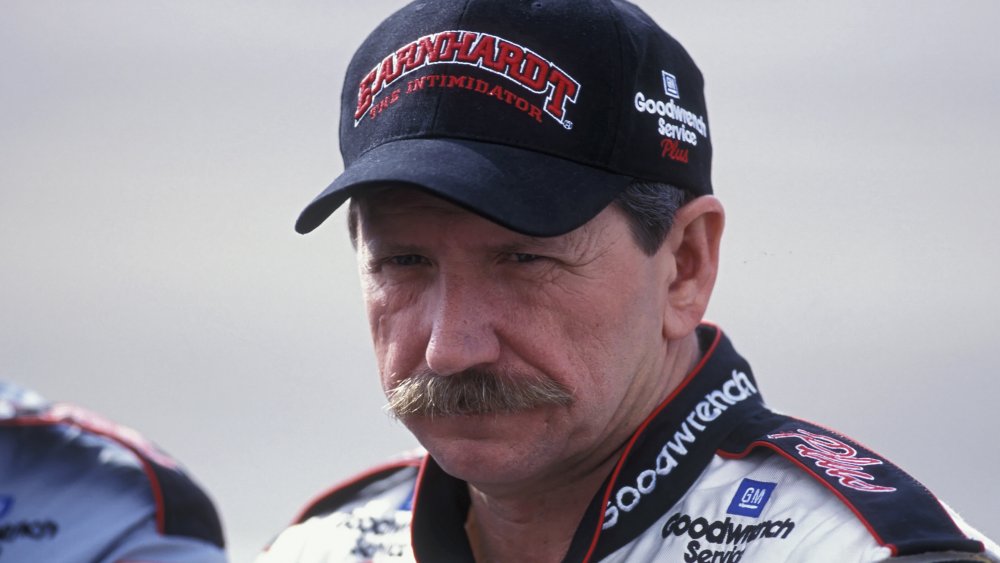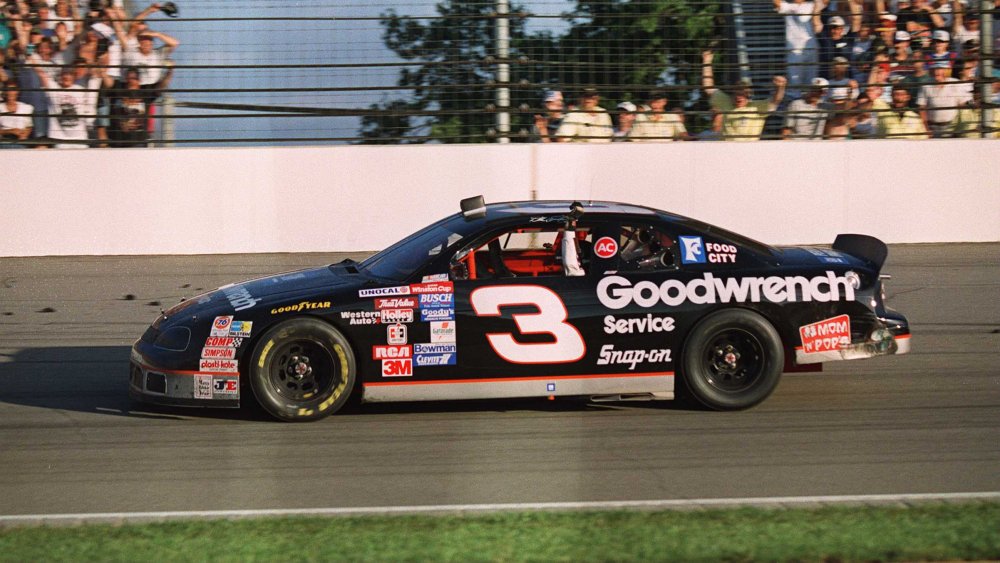The Tragic Death Of Dale Earnhardt, Sr
It's no surprise that NASCAR has so many fans. The crowds stand in awe of the drivers' skill as they navigate a track and other vehicles at up to 200 miles an hour. Almost as important are the personalities of the drivers themselves, who attract their own particular fan base out of NASCAR's wider following. One of the legendary drivers of NASCAR's history was Dale Earnhardt Sr., arguably the most famous racer to ever grace the track. Even people who don't follow NASCAR could pick out Earnhardt's black and red Goodwrench Chevy Monte Carlo.
In theory, NASCAR is a no-contact sport — bodies aren't supposed to collide with other bodies. The height of the action comes from cars passing each other, having malfunctions, and accidentally tapping into one another. The cars are decked out and customized, not only for maximum speed, but to keep their drivers safe as well. But with cars moving nearly triple interstate speeds, tragic accidents are always a possibility.
Earnhardt Sr. died in one of the most tragic ways a racer can: hitting the concrete wall at 180 mph. His life came to an end on February 18, 2001, and it happened in front of many of his devoted fans.
A tragic accident and a rare cause of death
Initially, his death was believed to have been caused by blunt force trauma. The autopsy showed a multitude of injuries, including a fractured skull and brain hemorrhage, along with broken ribs, a broken sternum, a broken ankle, and a collapsed lung. According to initial reports by the Orlando Sentinel, he died of the brain injury, but those reports turned out to be incorrect. According to U.S. Motorsport, Dr. Barry Myers, a professor of biomedical engineering at Duke University, reviewed Earnhardt's autopsy images. Dr. Myers concluded that Earnhardt's death was the result of something much less common.
Before his body ever actually hit anything, Earnhardt's head whipped forward from the inertia caused by the car suddenly slowing upon impact. The force of the head whip caused his spinal cord and connective tissue to separate while the external tissues remained intact, concluded Dr. Myers. It was essentially what's known as an "internal decapitation." Earnhardt's death was instantaneous. His death prompted NASCAR to implement new, stricter safety regulations, reports Jalopnik, to help keep other racers from suffering similar fates.

